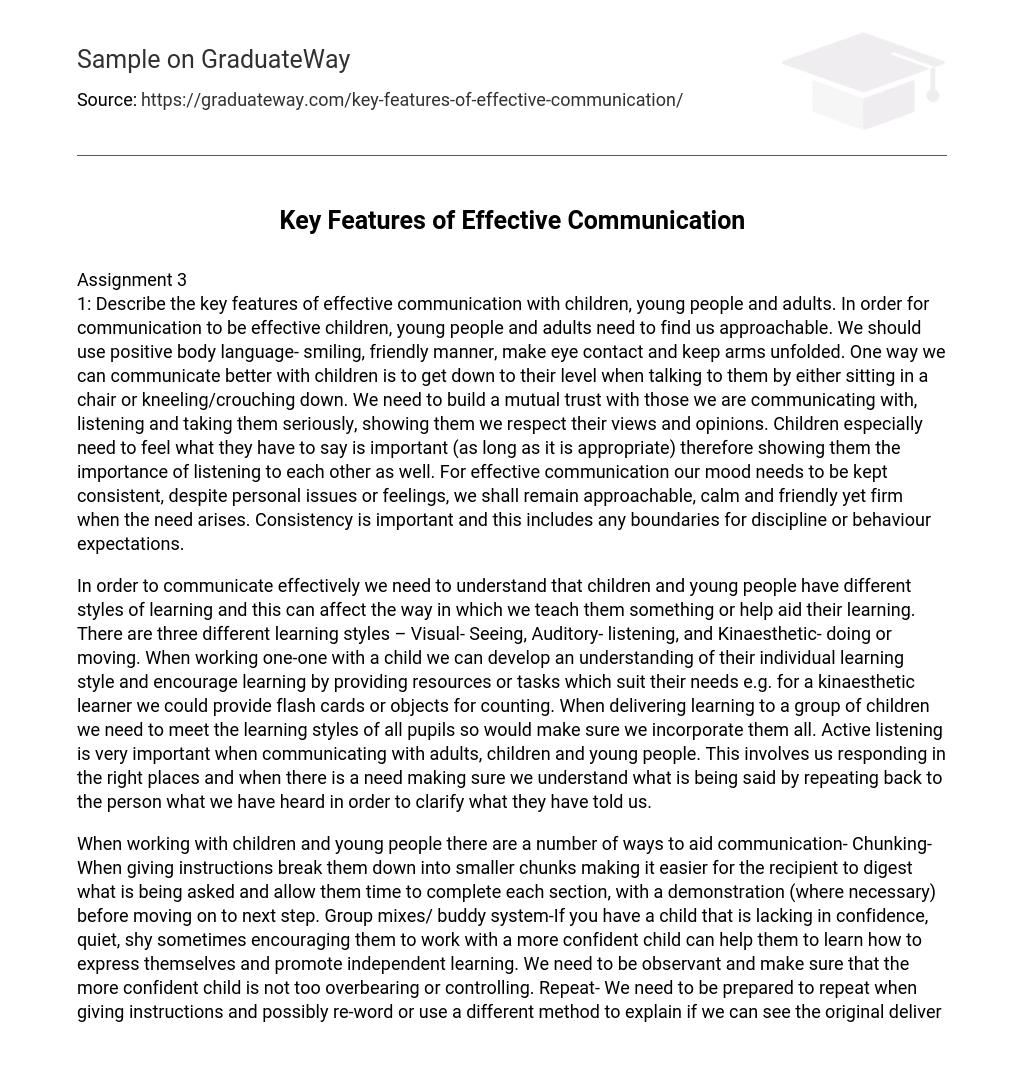Describe the key features of effective communication with children, young people and adults. In order for communication to be effective children, young people and adults need to find us approachable. We should use positive body language- smiling, friendly manner, make eye contact and keep arms unfolded. One way we can communicate better with children is to get down to their level when talking to them by either sitting in a chair or kneeling/crouching down. We need to build a mutual trust with those we are communicating with, listening and taking them seriously, showing them we respect their views and opinions.
Children especially need to feel what they have to say is important (as long as it is appropriate) therefore showing them the importance of listening to each other as well. For effective communication our mood needs to be kept consistent, despite personal issues or feelings, we shall remain approachable, calm and friendly yet firm when the need arises. Consistency is important and this includes any boundaries for discipline or behaviour expectations.
In order to communicate effectively we need to understand that children and young people have different styles of learning and this can affect the way in which we teach them something or help aid their learning. There are three different learning styles – Visual- Seeing, Auditory- listening, and Kinaesthetic- doing or moving. When working one-one with a child we can develop an understanding of their individual learning style and encourage learning by providing resources or tasks which suit their needs e.g. for a kinaesthetic learner we could provide flash cards or objects for counting.
When delivering learning to a group of children we need to meet the learning styles of all pupils so would make sure we incorporate them all. Active listening is very important when communicating with adults, children and young people. This involves us responding in the right places and when there is a need making sure we understand what is being said by repeating back to the person what we have heard in order to clarify what they have told us.
When working with children and young people there are a number of ways to aid communication- Chunking- When giving instructions break them down into smaller chunks making it easier for the recipient to digest what is being asked and allow them time to complete each section, with a demonstration (where necessary) before moving on to next step.
- Group mixes/ buddy system-If you have a child that is lacking in confidence, quiet, shy sometimes encouraging them to work with a more confident child can help them to learn how to express themselves and promote independent learning. We need to be observant and make sure that the more confident child is not too overbearing or controlling.
- Repeat- We need to be prepared to repeat when giving instructions and possibly re-word or use a different method to explain if we can see the original delivery has not worked.
- Feedback- This can be telling a child or young person how they have performed or behaved, or communicating to other staff members or carers how a child in progressing. This could be verbal or written- how has the child understood what is trying to be taught, have they learnt anything?
- Using observations- talking to child to find out what they understand or assessing them through tests e.g. spelling test or maths quizzes.





